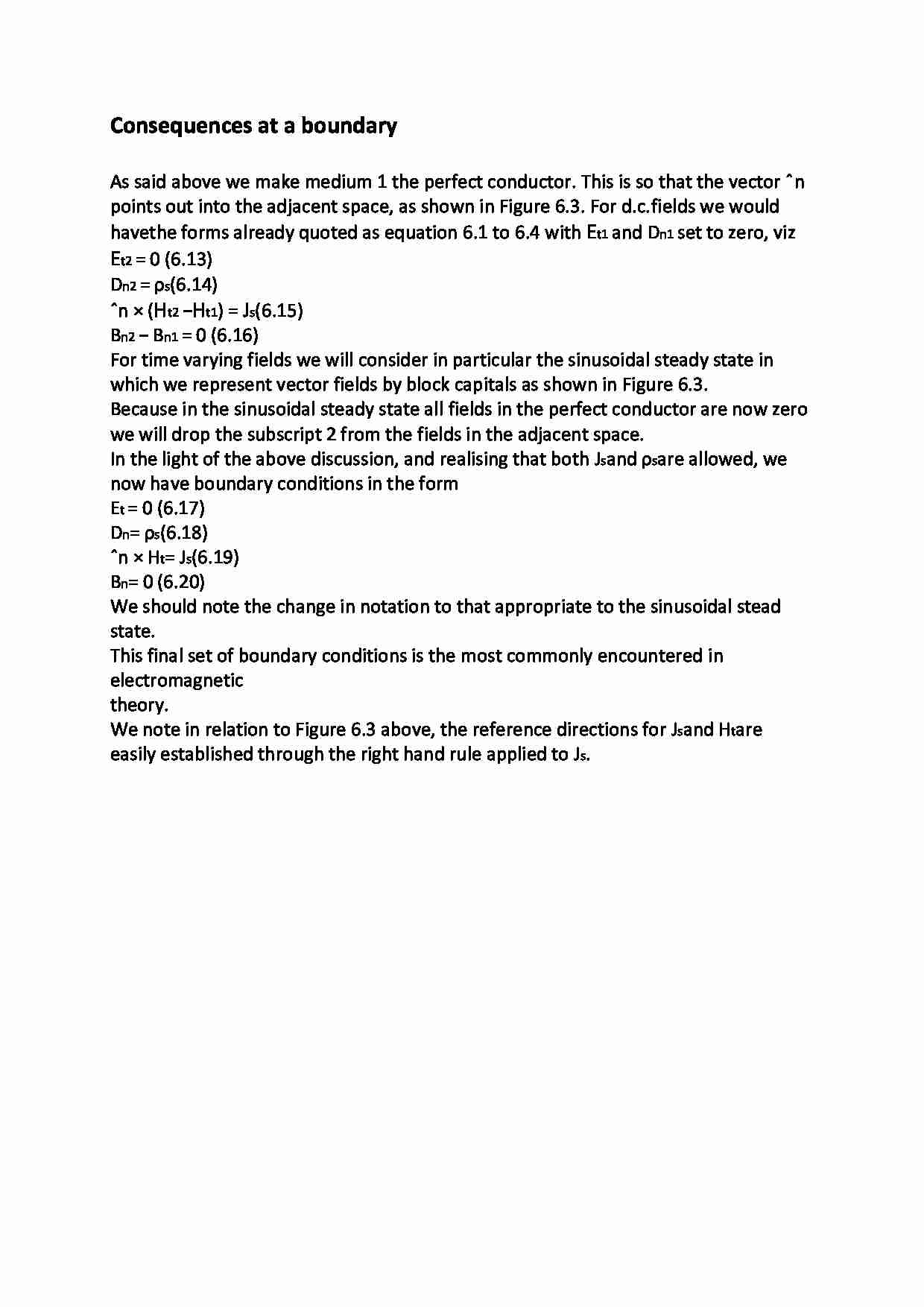
Consequences at a boundary As said above we make medium 1 the perfect conductor. This is so that the vector ˆn
points out into the adjacent space, as shown in Figure 6.3. For d.c. fields we would have the forms already quoted as equation 6.1 to 6.4 with Et1 and Dn1 set to zero, viz
Et2 = 0 (6.13)
Dn2 = ρs (6.14)
ˆn × (Ht2 −Ht1) = Js (6.15)
Bn2 − Bn1 = 0 (6.16)
For time varying fields we will consider in particular the sinusoidal steady state in
which we represent vector fields by block capitals as shown in Figure 6.3.
Because in the sinusoidal steady state all fields in the perfect conductor are now zero
we will drop the subscript 2 from the fields in the adjacent space.
In the light of the above discussion, and realising that both Js and ρs are allowed, we
now have boundary conditions in the form
Et = 0 (6.17)
Dn = ρs (6.18)
ˆn × Ht = Js (6.19)
Bn = 0 (6.20)
We should note the change in notation to that appropriate to the sinusoidal stead state.
This final set of boundary conditions is the most commonly encountered in electromagnetic
theory.
We note in relation to Figure 6.3 above, the reference directions for Js and Ht are
easily established through the right hand rule applied to Js.
... zobacz całą notatkę



Komentarze użytkowników (0)